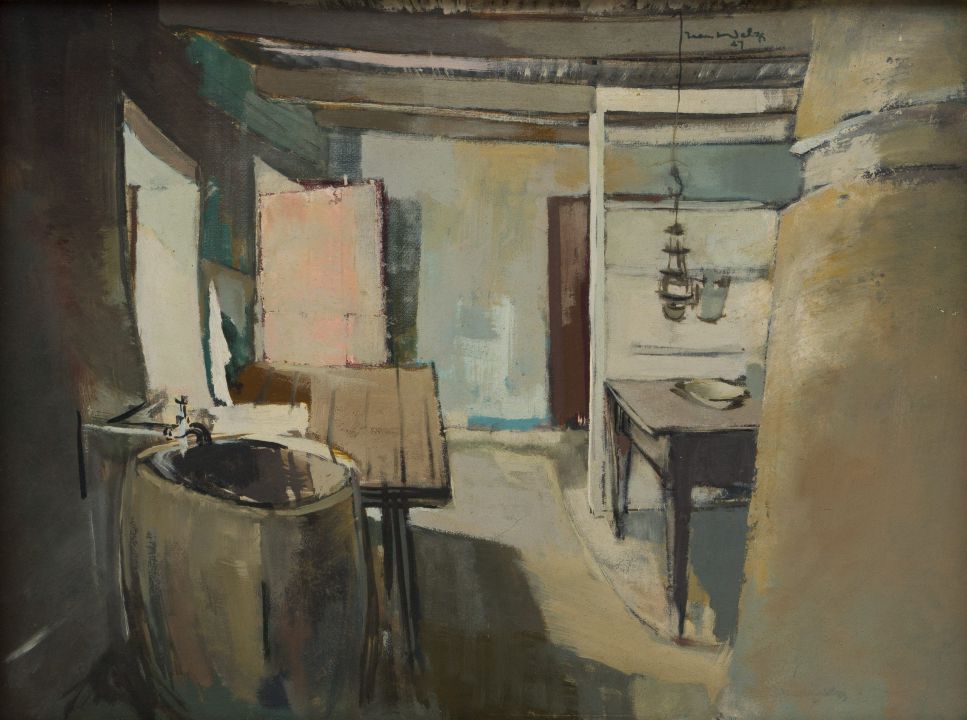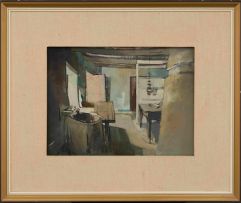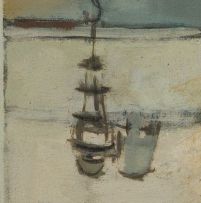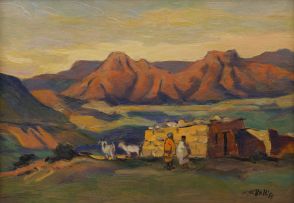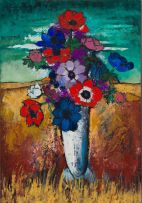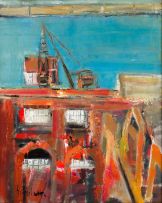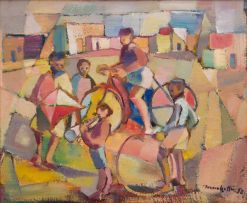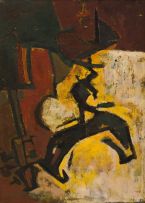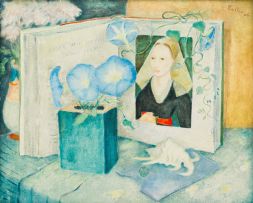Kitchen Interior
Jean Welz
About this Item
signed and dated 47; inscribed with the artist's name, the title, and the exhibition 'Jean Welz Retrospective 1970'on a South African National Gallery label adhered to the reverse; inscribed 'Norman Eaton, Pretoria, 1948' on the reverse
Notes
A sketch for this work is in the Naudé House Collection.
Esmé Berman wrote that Jean Welz's paintings 'projected the alternating emphasis of intellect and intuition, reason and emotion, in his perception of reality.'1 Welz was well served by his experience of living and working in the European cultural centres Vienna and Paris, and his association with modernists such as Le Cobusier and Adolf Loos. These influences are discernible in Kitchen Interior, 1947, made manifest by the architectural planes, shadows, the circular, vertical and horizontal lines and subdued hues. Kitchen Interior demonstrates how Welz interpreted architectural and artistic movements of the time and then transformed them into his own distinctive visual vocabulary.
These qualities no doubt appealed to renowned architect Norman Eaton, an independent thinker and designer revered for his devotion to architectural perfection. He acquired Kitchen Interior in 1948, the same year Welz represented South Africa on the Venice Biennale. Upon his death, Eaton bequeathed this early work to fellow Pretoria architect and friend Toby Louw.
To quote Hans Fransen, 'Jean Welz is an artist of stature who rises above all attempts at categorisation.'2
1. Esmé Berman (1983) Art and Artists of South Africa, AA Balkema, Cape Town, page 492.
2. Hans Fransen (1982) Three Centuries of South African Art, AD Donker, Johannesburg, page 310.
Provenance
Norman Eaton.
Toby Louw and thence by descent.
Exhibited
The South African National Gallery, Cape Town, Jean Welz Retrospective, 1970, cat. no. 122.
Literature
Elza Miles (1997) The World of Jean Welz, Cape Town: Fernwood Press and Rembrandt Van Rijn Art Foundation. Illustrated in colour on page 80.
